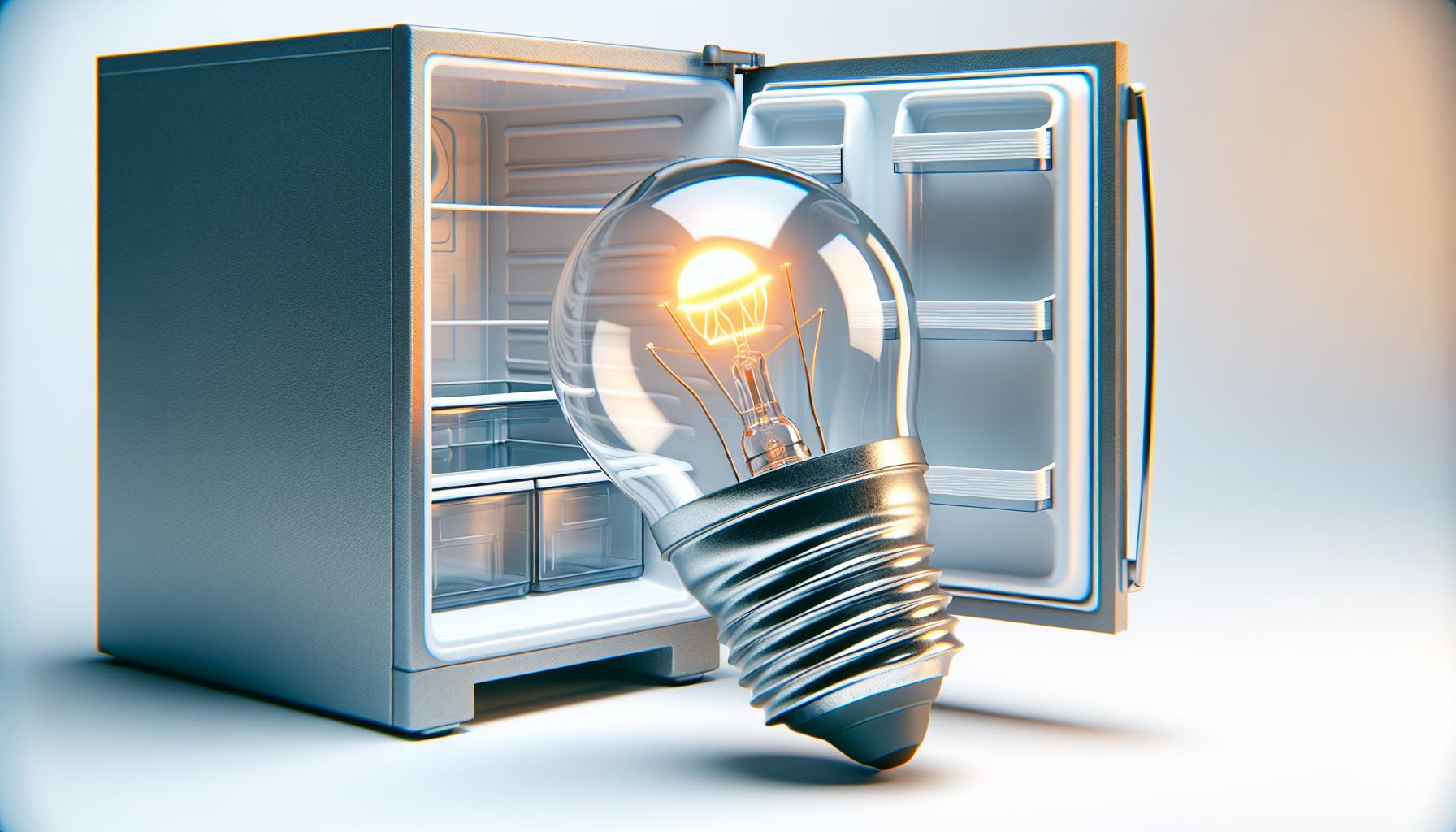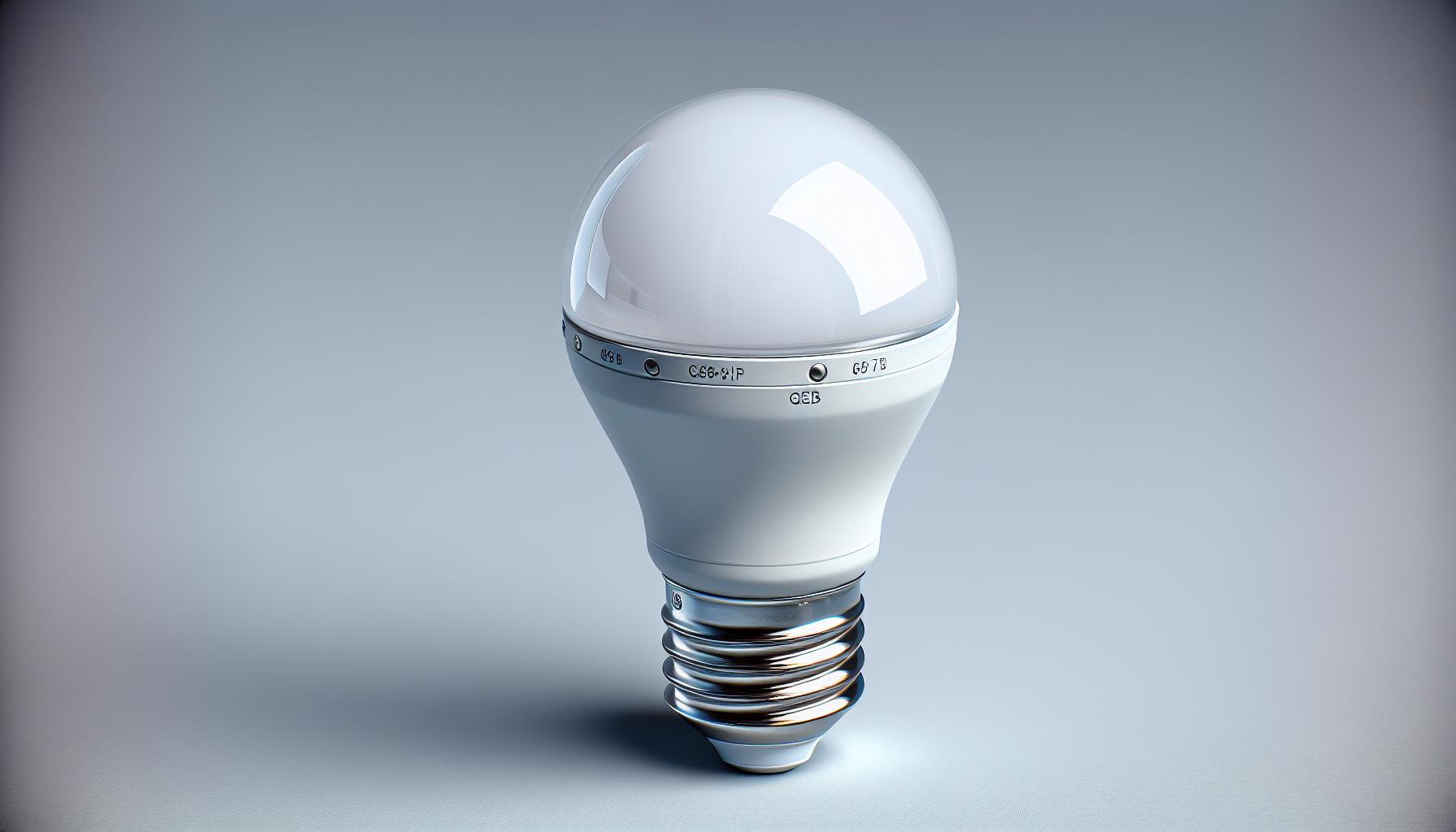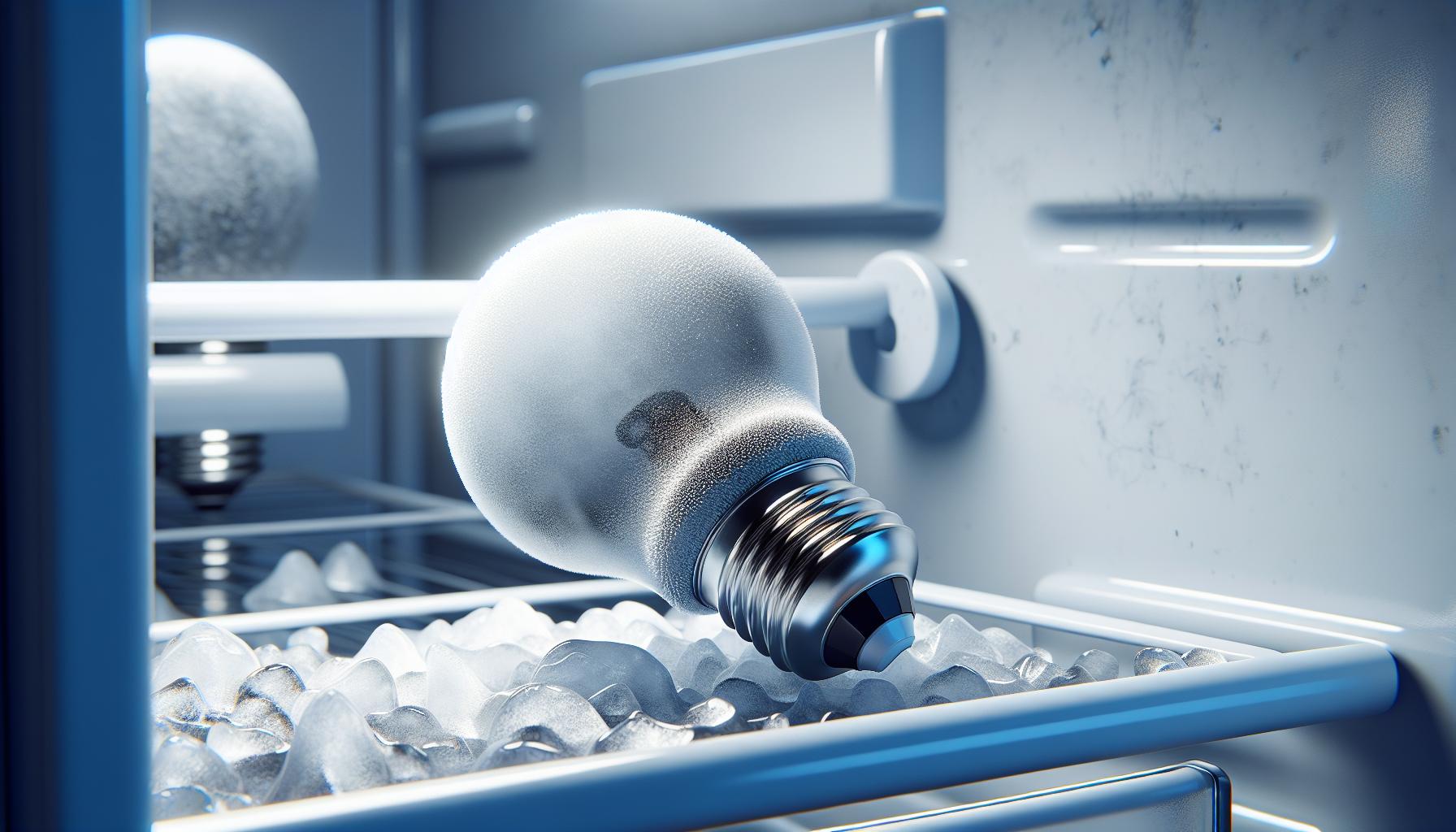Ever wondered why the light in your fridge doesn’t feel quite like the one in your living room lamp? You’re not alone. Fridge light bulbs are indeed a breed of their own, and there’s more to them than meets the eye.
From withstanding chilly temps to fitting into compact spaces, these bulbs are designed to endure conditions that would make ordinary bulbs flicker out. Let’s shed some light on what makes fridge bulbs unique and whether you can swap them with any bulb lying around your home.
The Purpose of Fridge Light Bulbs
When you reach for a snack or ingredient in your refrigerator, it’s the fridge light bulb that greets you, casting light on your culinary choices. Think of it as a guiding beacon in your quest for midnight munchies or the start of a meal prep session. But its job extends far beyond simple illumination.
Firstly, these bulbs are designed to perform in the chill of your refrigerator. The cold environment you strive to maintain for food freshness can cause regular bulbs to falter. But fridge bulbs? They’re built to shrug off the cold, ensuring consistent light every time you open the door.
These bulbs also have compact designs. Space inside a refrigerator is at a premium, with shelves and drawers meticulously arranged to store your groceries efficiently. A bulb that’s too large can be a real space invader. Fridge light bulbs, on the other hand, are crafted to fit snugly within their dedicated spots, often in the ceiling or walls of your fridge compartment. This compactness also means they’re constructed robustly to reduce the likelihood of breakage—after all, nobody wants a light bulb casualty while reaching for the milk.
Moreover, fridge light bulbs are an everyday example of specialized technology integrating seamlessly into your home. They provide a clear, bright light crucial for checking food labels, assessing freshness, and perhaps most importantly, helping to prevent culinary mishaps. Imagine accidentally grabbing chocolate milk for your savory recipe—that’s a disaster a fridge light bulb helps avert.
And while they’re working hard to provide visibility, these bulbs consume energy efficiently. Designed to keep up with the frequent door openings and closings that cause temperature fluctuations, fridge light bulbs are built to be energy-efficient, drawing less power than one might expect for such a crucial role.
In essence, every component and characteristic of fridge light bulbs serves a specific purpose tailored to support both your appliance’s functionality and your everyday kitchen experiences. Keep in mind, though, that while they’re remarkable in their performance, they’re not invincible and will eventually require replacement. When that time comes, understanding their unique requirements will guide you to make an informed choice, ensuring your fridge’s light continues to shine brightly on your food selection adventures.
Differences in Design
Diving into the heart of fridge lighting, you’ll discover that fridge light bulbs are not your everyday light bulbs. Their design is honed specifically for the chilly and confined environment of your refrigerator.
First, durability is key. Your fridge bulbs must endure temperature fluctuations every time you open the door. That seemingly innocuous bulb is actually an engineering marvel, capable of continuous operation in temperatures that would cause standard bulbs to falter.
Moreover, the bulbs are shaped to be compact. They need to fit into tight spaces, often surrounded by food and containers. This isn’t the place for hefty light bulbs; fridge bulbs are made to be petite and inconspicuous yet capable of illuminating every nook and cranny of your fridge interior.
Here’s a quick rundown of the features that set fridge light bulbs apart:
- Cold endurance: Can withstand temperatures as low as 0°F (-18°C).
- Small footprint: Designed to save space and avoid obstructing the use of refrigerator shelves.
- Screw bases: Often come in smaller screw bases like E12 or E14, unlike the typical E26 or E27 found in household lamps.
The wattage of these bulbs is also a testament to their efficiency; you’re unlikely to find a fridge bulb over 40 watts. They strike a balance – bright enough to see your food, but not so powerful that they waste energy or generate excess heat that might impact the appliance’s cooling efficiency.
« What Size Light Bulbs for Ceiling Fans: Shine Bright & Save Energy
Why Would a Light Bulb Explode When Turned Off? Uncover the Shocking Reasons »
Light quality is another consideration. While the warmth or coolness of a bulb’s light is a personal preference in most rooms, in a refrigerator, bright, white light reigns supreme. This helps you see the true color of your fruits, veggies, and other perishables, ensuring you’re always aware of their freshness and quality.
By understanding the distinct differences in design and function, you’re better prepared for the day you need to replace that little bulb that keeps your midnight snacks visible. Next time you crack open the fridge, take a moment to appreciate the small but mighty fridge bulb, perfectly tailored for its chilly home.
Temperature Resistance
When you’re dealing with the chilly environment of a refrigerator, one thing you can’t overlook is temperature resistance. Your standard light bulb isn’t cut out for the wild swings in temperature that your fridge light experiences. That’s where the nifty engineering of fridge bulbs comes in.
Your typical fridge light bulb is designed to thrive in temperatures that would leave other bulbs frostbitten, so to speak. Extreme colds and abrupt transitions to room temperature when you open the door put pressure on materials and electrical components. That’s why these bulbs are made with special filaments and durable glass. It’s like a winter coat for bulbs—keeping them warm enough to shine even when you’re reaching for midnight snacks in the cold.
The filament in a fridge bulb is a marvel of durability. Unlike the filaments in standard bulbs, it’s built to withstand expansion and contraction without breaking. It’s the bulb’s flexibility that allows it to light up your lettuce and leftovers time after time without throwing in the towel. Remember, your fridge light doesn’t just battle cold—it battles a temperature rollercoaster as you open and close the door multiple times a day.
What’s more, fridge bulbs are crafted with a higher inert gas fill pressure. This means they’re not just physically tough but also chemically stable. Their ability to perform isn’t severely affected by the cool climate of the refrigerator.
Choosing the right bulb for the right environment is crucial. So, whether you’re doing a quick DIY replacement or just shining a light on kitchen mysteries, knowing about these temperature-resistant warriors can save you a headache. Next time you raid the fridge, take a moment to admire that small but mighty glow that stands up to cold like a champ.
Size and Fit
When you’re knee-deep in home DIY projects, there’s a special kind of satisfaction in knowing the exact size and fit for every component you need. The same goes for selecting the right fridge bulb. These aren’t your average light bulbs; they’re tailored to meet unique dimensions. Compactness is key with fridge bulbs to ensure they fit the confined spaces within your refrigerator without hindering storage capacity.
If you’re replacing a fridge bulb or indulging in a DIY upgrade, you’ll want to pay close attention to the base of the bulb. Smaller screw bases, such as the E14, are common in fridge lighting, unlike the standard E26 base found in most household bulbs. This is to accommodate the miniature fixtures typically found in fridges.
Besides base size, the bulb’s shape also varies. For refrigerators, the T and A-series bulbs are prevalent. These bulbs are slim and elongated, quite the contrast to the broad shapes we’re accustomed to in room lighting. Here’s a quick breakdown of common fridge bulb sizes you might come across:
| Bulb Series | Diameter | Common Use |
|---|---|---|
| T Series | 20mm (T7) | Compact Appliances |
| 26mm (T8) | Refrigerators | |
| A Series | < 50mm (A15) | Domestic Fridge Models |
For those DIY enthusiasts, measuring your current bulb before purchasing a replacement is a must. Remember, even a millimeter can make the difference between a bulb that fits snugly and one that simply won’t sit right.
Remembering the specifics can save you time and frustration, particularly because fridge space is optimized for food storage, not for your hand to wrestle with an ill-fitting bulb. Every component inside your fridge is designed to maximize efficiency, and your fridge’s light bulb is no exception. It’s a fine balance of size, fit, and functionality that keeps everything illuminated just when you need it.
Can You Use Any Bulb in Your Fridge?
When you’re on the hunt for a new fridge bulb, you might wonder if snapping up any light bulb will do the trick. But here’s the thing: not all bulbs are created equal, especially when it comes to your fridge. It’s tempting to just pop in any old bulb you have lying around, but there are a few things to keep in mind.
Firstly, fridge bulbs are specifically designed to handle the merry-go-round of cool and warm temperatures without batting an eyelid. The chaotic temperature changes in a fridge environment can cause a regular bulb to fizzle out quicker than you’d finish a pint of your favorite ice cream. So, you’ll want a bulb that says, “Bring it on!” to both the chill-zone of your veggie drawer and the occasional warm front when the door’s left ajar.
Secondly, you’ve got to consider the size and shape. Remember how fridge bulbs come in slimmer designs? They’re meant to fit into the compact nooks of your fridge, and using anything heftier might just not fit or, worse, could interfere with closing the door. And let’s not forget the base – those smaller screw bases are there for a reason.
And wattage? Absolutely crucial. Stick to bulbs that are 40 watts or less to keep your food illuminated without turning your fridge into a miniature sun. This isn’t just about playing it safe; it’s about efficiency. You’re aiming for that sweet spot where the light’s just right to easily tell whether your lettuce is crisp or if those leftovers should have been pitched last week.
Ever been blinded by a light that’s too harsh? Bright white light matters in a fridge, but you don’t want to feel like you’re searching for snacks on the surface of the sun. A fridge-specific bulb will have the right lumen output to cast a clear, but not overwhelming, light on your midnight munchies.
If you’re into DIY projects and feeling a bit adventurous, you might be tempted to experiment. Just remember, your fridge isn’t the place for that artsy Edison bulb you’ve been eyeing. Keep experiments to lamps and fixtures that don’t come with a side of dairy. Stick to the tried and true for your fridge, and you’ll find that it’s not just about function—it’s about food safety, too.
Conclusion
So you’ve got the scoop on fridge bulbs! Remember, they’re not your average light bulb. They’re tough cookies, made to handle the chill and squeeze into snug spaces. When you’re on the hunt for a replacement, make sure you grab one that’s up for the job. Stick with that 40 watts or less rule for the perfect glow without guzzling power. And don’t forget, the right light keeps your food looking good and staying safe. So next time your fridge light flickers out, you’ll know exactly what to do. Keep it cool, keep it bright, and always go for the bulb that fits just right!
Frequently Asked Questions
What is the main purpose of a fridge light bulb?
Fridge light bulbs are designed to illuminate the interior of a refrigerator, making it easier to see and evaluate the freshness and quality of food stored inside.
How does a fridge light bulb differ from regular light bulbs?
Fridge light bulbs are built to handle extreme temperature fluctuations and are typically more compact to fit in the constrained spaces inside a refrigerator. They also come with smaller screw bases and lower wattage.
What wattage do fridge light bulbs usually have?
Most fridge light bulbs have a wattage of 40 watts or less, which provides sufficient brightness while maintaining energy efficiency.
Can any light bulb be used in a refrigerator?
No, not all light bulbs can be used in a refrigerator. Fridge bulbs are specially designed for the environment inside a fridge and to fit in compact spaces.
Why is it important to choose the correct bulb size and wattage for a refrigerator?
Selecting the right bulb size ensures it fits properly in the appliance, and the correct wattage balances brightness with energy efficiency, both essential for the functionality of the fridge light.





